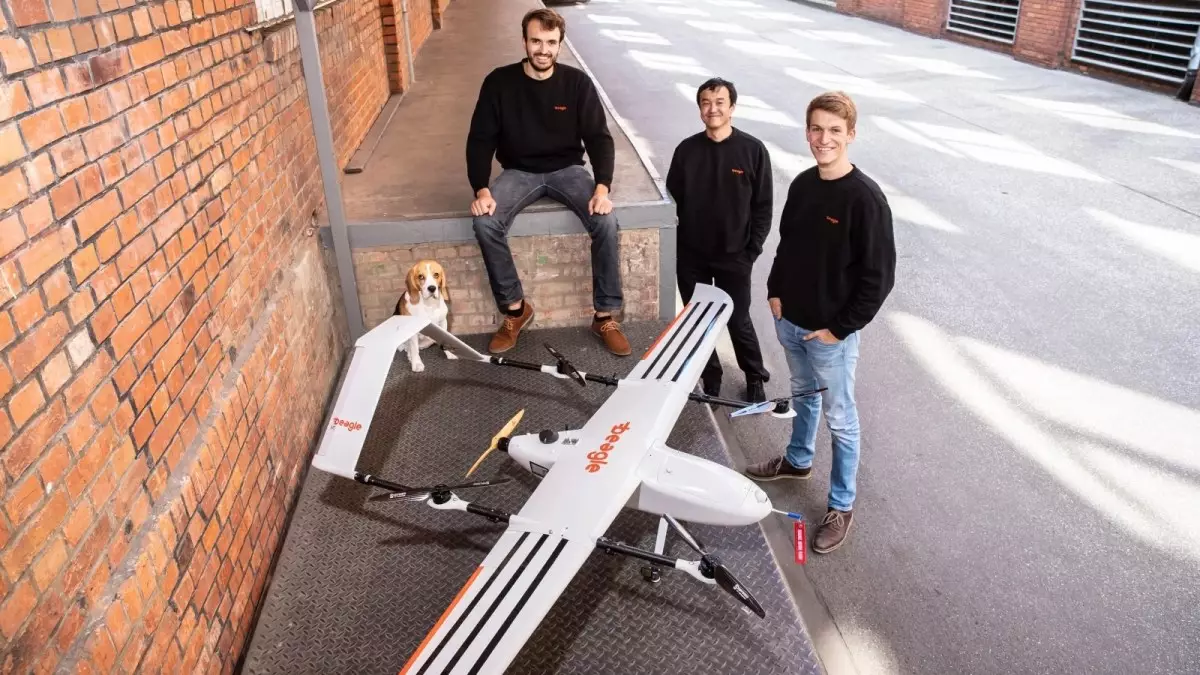In the wake of escalating damages to energy infrastructure—particularly from natural disasters or conflict zones—traditional inspection methods have become not only costly but also logistically cumbersome. For decades, helicopters, which are notably expensive to operate, have dominated aerial inspections of essential structures like electricity pylons and gas pipelines. However, technological advancements are ushering in a paradigm shift with the emergence of drones. These remote-controlled flying devices are becoming crucial tools for real-time data collection, promising to reduce costs and increase efficiency. A pivotal development in this domain comes from Beagle, a Hamburg-based startup that has pushed the boundaries of drone capabilities with their long-range inspection drones.
Beagle’s Technological Breakthrough
Beagle’s innovation is particularly striking. The company recently secured €5 million in seed funding to enhance and scale its operations. This financial momentum follows their earlier successful rounds, bringing their total funding to nearly €9 million. Co-founder Oliver Lichtenstein describes their product as a “computer with wings,” which adeptly navigates the complicated landscape of EU airspace regulations while performing autonomous inspections. The drone’s design allows it to take off and operate without human intervention, making it a reliable choice for organizations looking to rapidly assess infrastructure without the overhead of sending teams into potentially dangerous environments.
What sets Beagle apart is its commitment to data resolution, boasting a staggering clarity that surpasses existing satellite technologies by a factor of 75. This isn’t just an incremental improvement; it’s a fundamental transformation to how data can be gathered and analyzed. Clients can send geo-coordinates and receive service quotes based on a per-kilometer charge, eliminating much of the guesswork involved in traditional inspections.
Competitive Landscape and the Unique Value Proposition
The drone inspection market is undoubtedly crowded, featuring competitors such as Intero and US-based Nearmap. Yet, Beagle asserts a strong position by delivering a service that is not only cost-effective but environmentally friendly compared to traditional methods that utilize helicopters with significant carbon footprints. The company’s operations are also rooted in “EU-made” solutions, providing a distinct advantage amid rising geopolitical tensions that can complicate data security and operational reliability.
Moreover, the operational approval from the EU to fly across 80% of its airspace positions Beagle favorably against competitors who may face regulatory hurdles. The market opportunity here is sizable, with the EU projected to require stringent methane emission tracking, approximating a €2 billion valuation in its infrastructure inspection sector alone.
The Future of Drone Technology in Civilian Use and Beyond
While Beagle currently focuses on civilian applications, the broader implications of its technology are profound. With the ongoing threats to critical infrastructure globally, the potential for drones to offer real-time surveillance cannot be overstated. Nikolas Samios of PT1 highlights this capability, noting that as infrastructure comes under attack, the importance of monitoring assets in real-time is paramount.
This position opens up discussions about the ethical and practical applications of drone technology in volatile environments. The dual-use potential of these drones—while officially positioned as strictly civilian tools—raises questions about their implications in military contexts, particularly regarding surveillance capabilities that could assist in conflict zones.
Given Lichtenstein’s background with the German Ministry of Transport’s Drone Advisory Board, alongside his experienced team, Beagle stands at the intersection of innovation and necessity. Their technology is emblematic of a rapidly evolving field that seeks to enhance the safety and efficiency of infrastructure inspection, paving the way for a future where drones become integral to operational strategies across various sectors.
In an age where rapid and precise data collection can dictate the response to public safety challenges, Beagle’s journey reflects a broader trend towards integrating cutting-edge technology into our lives—a promise of efficiency, accuracy, and potentially, a redefined sense of security.

